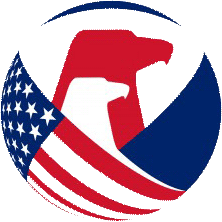Chair Hoehn-Saric Letter to U.S. Fire Administrator Dr Lori Moore-Merrell
Lori Moore‐Merrell, DrPH
U.S. Fire Administrator
U.S. Fire Administration Dear Dr. Moore‐Merrell,
The U.S. Consumer Product Safety Commission (CPSC) is an independent federal regulatory agency charged with protecting the public from hazardous consumer products. CPSC has jurisdiction over approximately 15,000 categories of consumer products ranging from juvenile products to off‐highway Vehicles (OHVs) to portable fuel containers to home appliances. Fire is a leading cause of consumer‐product related deaths and injuries and one of the priority hazards that CPSC addresses. CPSC staff estimates that between 2018 and 2020, there were an annual average of 2,440 people who died in residential structure fires. (A list of recent fire loss reports can be found here: https://www.cpsc.gov/Research--Statistics/Fire.)
CPSC and the U.S. Fire Administration (USFA) are uniquely positioned in our missions when it comes to fire safety; and the Federal Fire Prevention and Control Act of 1974 (15 U.S.C. § 2219) establishes our connection as agencies concerned with fire safety. As such, we believe there are opportunities to work with the USFA to help reduce the risks of fires.
Specifically, there are three on‐going activities that may benefit from coordination between our agencies. First, to fulfill our mission, CPSC relies on the National Fire Incident Reporting System (NFIRS) database. We use the NFIRS database in our rulemaking, compliance, and voluntary standards activities. These data help inform CPSC’s priorities, establish the impact of our work, and lay the foundation for the messaging we provide the public. Reductions to these data would significantly impact our ability to monitor and protect consumers from fire risks. We understand the changes to the new data system, National Emergency Response Information System (NERIS) will be beneficial to the fire safety community; however, some of the proposed changes negatively affect our work and, as initially proposed, would significantly limit our ability to address consumer‐product‐related fire hazards. CPSC requires product‐related information included in these data to inform product safety decisions related to fire sources (such as lighters and appliances) and items first ignited (such as furniture). Therefore, I want to make CPSC staff available to help USFA better understand these issues to benefit the overall development of NERIS and ensure that data needed to determine consumer product fire hazards are available to protect consumers from death and injury.
Second, CPSC and USFA have a significant common interest in lithium‐ion battery fires. We have been working on lithium‐ion battery issues for many years now and we have technical expertise that we can share in discussions with USFA.
Finally, USFA recently released a report on recommendations to mitigate the risk of wildfire (https://www.usfa.fema.gov/about/media-releases/wildland-fire-mitigation-and-management-commission-report/). CPSC may be able to help the federal efforts that the USFA is leading, bringing our expertise on the safety of individual consumer products. As a consumer‐facing agency, we also could help in consumer outreach, education, communication, or warnings. We propose coordinating with the USFA in the wildfire work we do and the messaging we share.
I would encourage a meeting between our respective technical staffs to discuss these opportunities. Your team should please contact Duane Boniface (dboniface@cpsc.gov), the Assistant Executive Director of the CPSC Office of Hazard Identification and Reduction, to further this discussion. CPSC looks forward to working with USFA to reduce the risks of fire.
Sincerely,
Alexander Hoehn‐Saric Chair
U.S. Consumer Product Safety Commission
CC: Duane Boniface


